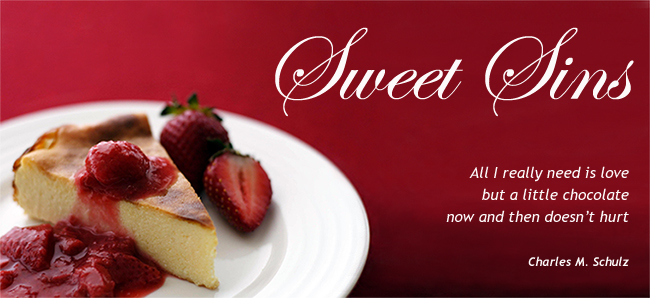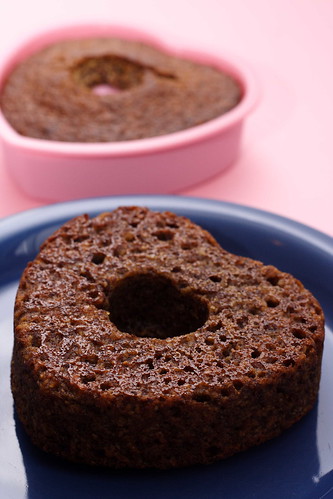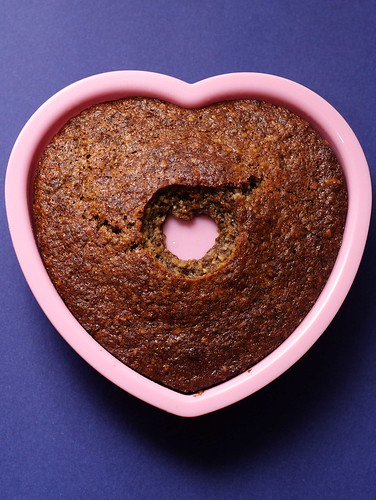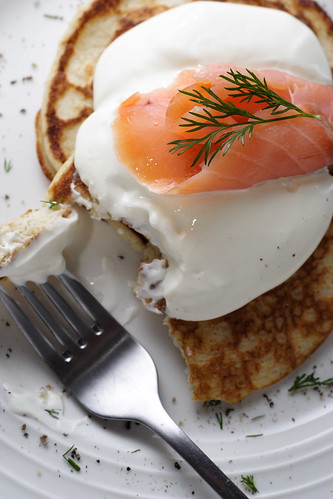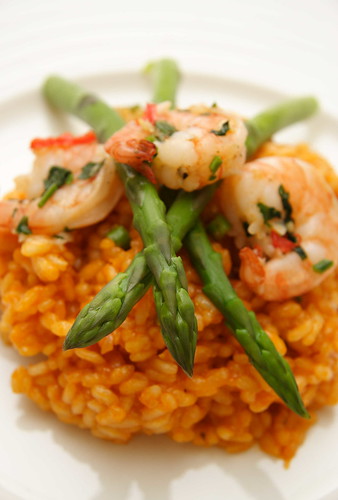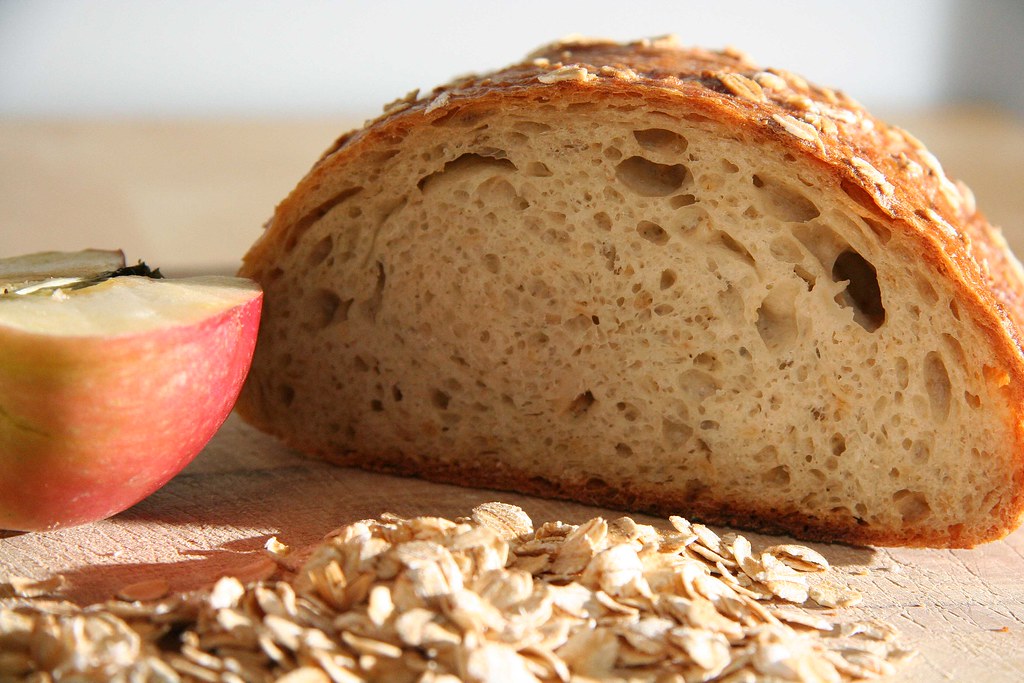 In order to expand my bread baking knowledge I have been raiding the three libraries in my vicinity and thus was able to track down a couple of books I had always wanted to read: first of all, Dan Lepard's "The Handmade Loaf" which I read from front to cover with great delight. Finally, I found a book that features many different recipes for rye bread - quite unusual for an English-speaking author. I gladly read about his "less is more" kneading techniques and his way not to flour the work surface but to oil it. It works much better that way for me!
In order to expand my bread baking knowledge I have been raiding the three libraries in my vicinity and thus was able to track down a couple of books I had always wanted to read: first of all, Dan Lepard's "The Handmade Loaf" which I read from front to cover with great delight. Finally, I found a book that features many different recipes for rye bread - quite unusual for an English-speaking author. I gladly read about his "less is more" kneading techniques and his way not to flour the work surface but to oil it. It works much better that way for me!However, before trying some of his recipes, I first had to revive my still frozen sourdough culture. Luckily, the little boys did survive their long sleep in the freezer. However, although feeding them daily in the beginning, I was never quite sure about their potency. Therefore (and because I didn't want to pour excess sourdough down the drain) I upped the amount of sourdough liberally. Not sure if that's what you should do - that's why I've included the original amounts so everyone can decide which way to go.
This Rolled Oat and Apple Bread is incredibly moist although you can hardly guess which ingredients are responsible for its long shelf-life. In case you have trouble finishing a loaf in time - this is your recipe. The slices also make excellent toast. My favourite toppings are either jam and honey or a soft cheese...hmmm...
This bread is also my entry for The Bread Baking Day #2 - Bread with Fruit. This new food blogging event was invented by Zorra and this time hosted by Columbus Foodie.
The second bread baking book I was looking forward to is Rose Levy Beranbaum's "The Bread Bible". In the beginning, I felt a bit put off - this much acclaimed food writer is tackling the subject in an almost scientific way which seemed to destroy the whole mystery about bread baking. Stop, stop, stop, I then thought, isn't that exactly what you were looking for? Ah, right... Once I got accustomed to her very thorough way of explaining things I learned a lot about certain details that had always left me puzzled. For example, I now know that fan-baking is entirely wrong for bread because you speedily lose all the self-injected steam and create an environment too dry for your bread. Since I switched to the classic bake setting, my breads finally have a good crust on the bottom (which had always been too soft) and I finally got to enjoy this mysterious crackling sound of the crust as the bread cools down. I believe that's called "the crust sings" and that absolutely describes my feeling when hearing it. Thank you, Rose, now I believe that there's nothing better than a healthy dose of perfectionism!
The third book in my library-collection is Maggie Glezer's "Artisan Baking Across America". I'm not finished yet and haven't tried any recipes but stay tuned!
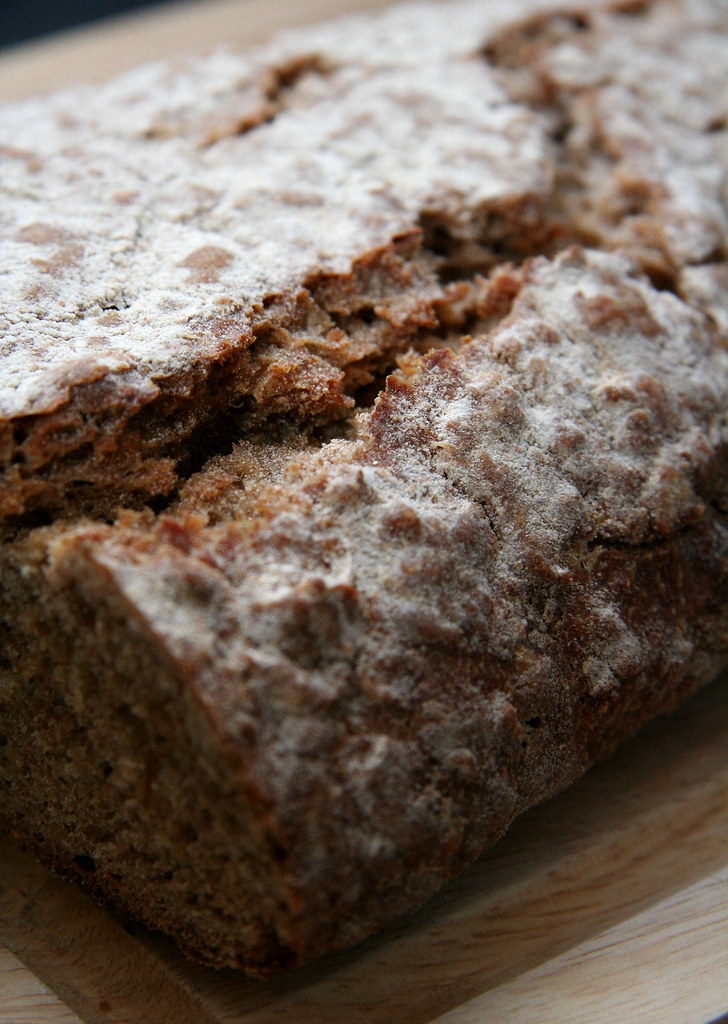 PS: Being a "little bit" behind with my blogging, I thought I had better include another of Dan Lepard's breads. This chewy rye-based bread is his Five Grain Bread (although it was only a Four Grain Bread in my case). It really reminded me of the hearty breads from home and was eaten in no time...
PS: Being a "little bit" behind with my blogging, I thought I had better include another of Dan Lepard's breads. This chewy rye-based bread is his Five Grain Bread (although it was only a Four Grain Bread in my case). It really reminded me of the hearty breads from home and was eaten in no time...Rolled Oat and Apple Bread
The ingredients
50g rolled oats
100g boiling water
200g peeled and grated apple (equals one big apple)
75g water at 20 degrees Celsius
250g white sourdough (original recipe: 100g of Dan Lepard's white leaven)
1/4 tsp dry instant yeast (original recipe: 3/4 tsp fresh yeast, crumbled)
300g + 3 heaped tbsp bread flour (original recipe: 250g bread flour)
1 tsp salt (orginial recipe: 3/4 tsp fine sea salt)
rolled oats for sprinkling
(Dan Lepard also suggests an egg wash which I simply forgot but the bread browns beautifully in any case)
1
Pour the boiling water over the rolled oats and let soak for five minutes while preparing the other ingredients.
2
Add the grated apple, the leaven, the extra water, the yeast, and mix everything together with a wooden spoon. Stir in the dry ingredients. (Dan Lepard mixes the dough quick-bread style but I prefer to do it all in one bowl - less dish washing...)
Mix until you have a soft sticky dough. Cover and leave for ten minutes.
3
Rub 1 tbsp of oil onto your work surface and knead the dough for ten seconds. (Between kneading Dan Lepard always returns the dough into the cleaned and lightly oiled mixing bowl - I just put the bowl over the dough on the work surface to prevent the dough from drying-out).
4
Knead the dough once more for ten seconds and shape it into a smooth, round ball.
5
Either return dough to bowl and cover or again put the bowl on top of the dough as a cover. Leave for one hour at 21-25 degrees Celsius.
6
Lightly flour your work surface and shape the dough into a loaf. Final rise: Either leave the loaf seam-side down on a piece of baking paper or put the loaf seam-side up into a proofing basket. Leave for 1.5 hours or until almost doubled in height.
Meanwhile, preheat the oven to 210 degrees Celsius (conventional). I also like to put in an extra baking sheet to splash on some water at the beginning of the baking process. This helps to create steam for a nice rise and good crust.
7
At the end of the final rise, I like to brush my loaf with lots of water, sprinkle some flour on top, rub it in, and brush with more water. This is similar to a glaze and results in a shiny surface after baking. It also helps to glue on toppings like rolled oats.
8
Bake the loaf in the middle of the oven. Splash a cup of water on the lower baking sheet during the first five minutes. After 30 minutes in total, lower the temperature to 190 degrees Celsius and bake for a further 15-20 minutes. The loaf should be golden-brown, feel light in weight and sound hollow when tapped on the bottom.
The source
Adapted from "Dan Lepard: The Handmade Loaf"
The hint
This bread tastes best on the second day. On the first day, the crumb is almost sticky with moistness and you can feel pieces of apple. On the second day, the flavours will have combined beautifully. This loaf has an incredible shelf-life and will stay fresh for a week (I store my bread in a fabric bag made out of a tea towel). However, it's also delicious when toasted.
